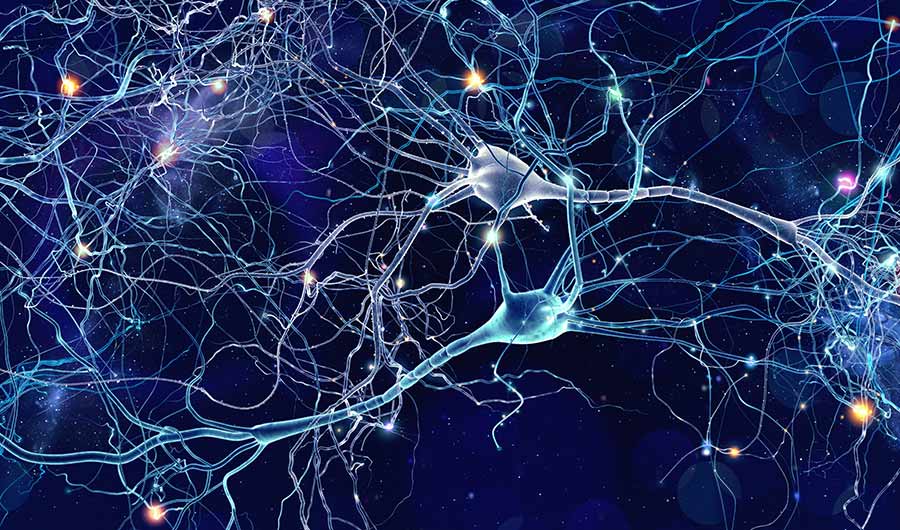New Light Microscope Peers Inside the Brain of a Living Mouse

whitehoune via Shutterstock
(Inside Science) -- In the 1670s, Antonie van Leeuwenhoek pioneered the use of light microscopes to magnify tiny living objects and, in the process, discovered an entire world invisible to the naked eye. His many observations included swiftly moving bacteria, protozoa with whipping tails, and red blood cells speeding through capillaries.
During the centuries that followed, light microscopes became more powerful and saw smaller things -- but their strength had a limit. According to the laws of physics, the minimum resolution for optical microscopy is roughly half the wavelength of light, no matter the objective lens or aperture design. The Abbe diffraction limit, named after physicist Ernst Abbe, who first described it in 1873, led scientists to believe that the finer details of cells, along with viruses and proteins, would always appear muddled.
More than 120 years later, the developers of super-resolution optical microscopy cleverly circumvented the Abbe diffraction limit -- and won the 2014 Nobel Prize in chemistry for their herculean feat. Up to this point, super-resolution microscopes had only taken 2D images of the top layers of biological tissue. Now, a team of researchers has taken the field a step further by capturing the first 3D super-resolution images from deep inside the brain of a living mouse.
"Synapses that connect one neuron with another are a few hundred nanometers wide, and you can't really resolve these in a normal light microscope. The resolution of traditional light microscopy is limited to about 250 nanometers, which on a biological scale is fairly big," said biophysicist and research team leader Joerg Bewersdorf at the Yale School of Medicine. "With a [super-resolution] microscope, you can get down to less than 100 or even 10 nanometers."
The study, published in March in the journal Optica, demonstrates the power of this new type of microscope to visualize details beneath the surface of the living brain and other organs. While electron microscopes can observe much smaller objects than even super-resolution microscopes, the high energy of the electron beam would destroy functioning biological tissue.
"Imaging in the whole, intact, living -- and later, also learning and behaving -- mouse is absolutely needed for the last step in understanding brain function," said Katrin Willig of the Max Planck Institute of Experimental Medicine, who was not involved in the study. "Especially learning and memory can only be understood in the functioning brain, and brain slices or cultured cells are not an adequate substitute."
Bewersdorf and his former graduate student, Mary Grace M. Velasco, spent more than five years working on the microscope, which combines several technical advances to overcome the difficulties of 3D imaging. They started with stimulated emission depletion (STED) microscopy, an existing super-resolution technique that uses scanned light pulses and fluorescent molecules to expose a tiny bit of the sample at a time. By only allowing a nanometer-sized portion to fluoresce and register, STED microscopy is able to bypass the Abbe diffraction limit.
However, biological tissue strongly scatters light, meaning that the laser beam has trouble reaching depths greater than a few tens of nanometers. So, the researchers combined STED microscopy with another light-based technique, called two-photon excitation (2PE) microscopy.
"2PE enables imaging deeper in tissue by using near-infrared wavelengths rather than visible light," said Velasco. "Infrared light is less susceptible to scattering and, therefore, is better able to penetrate deep into the tissue."
Velasco and her colleagues also applied adaptive optics technology -- the same technology used in astronomy to correct for atmospheric distortions when observing stars -- to compensate for complex distortions of the light due to the unevenness of brain tissue. Lastly, they chose a special objective lens and red fluorescent dye that were both more suited to deep-tissue imaging.
The new microscope allowed researchers to image the brain of a living mouse. When zoomed in, it reveals an individual dendritic spine.
Video credits: Joerg Bewersdorf, Yale School of Medicine
When put to the test, their 3D-2PE-STED system could make out the 3D structure of dendritic spines, small protrusions on the branches of a neuron that receive synaptic inputs from neighboring neurons. It probed dendritic spines up to 76 microns below the surface of the brain and observed subtle day-to-day changes, which are difficult to distinguish using 2PE microscopy alone.
"We know that when the brain learns something, its structure actually changes. New synapses form or become stronger, while others disappear or become weaker. You need a microscope that has the resolution to resolve these synapses so you can see how the shape changes," said Bewersdorf. "If you want to understand how learning works, then this microscope becomes very useful because it allows us to essentially watch an animal as it learns."
Outside experts in the field of STED microscopy believe the work represents an important advance for applications in biomedical research -- but with some caveats.
Valentin Nägerl, a neuroscientist and STED researcher at the University of Bordeaux in France, is encouraged by the researchers' use of adaptive optics to salvage the quality of data from deeper in the mouse brain, where more interesting neuronal activity is present. But while the system paves the way toward achieving true 3D super-resolution imaging, he believes it still falls short of the goal.
"While I totally subscribe to their technology, I am not so impressed by the images, [which leave] room for improvement," said Nägerl. "As the authors point out, effects like scattering and brain motion in the case of living animals still represent big challenges that prevent or undercut STED-based imaging."
Ilaria Testa, a biophysicist at the KTH Royal Institute of Technology in Sweden who was not involved in the research, believes the technique could have broad applicability. "This method paves the way for numerous new applications in physiologically relevant samples," she said. "Not only brain tissues, but other organs such as liver, kidney, or heart tissues which are also very scattering can be studied with this new system."

